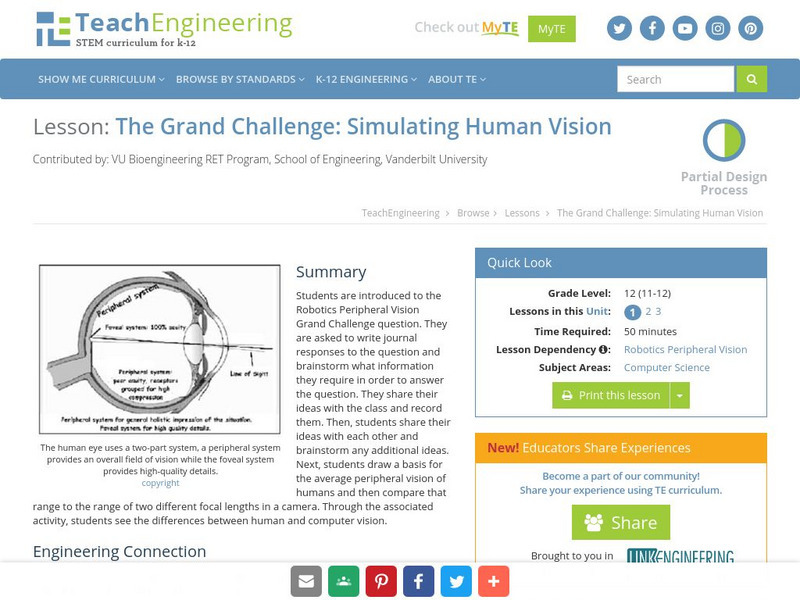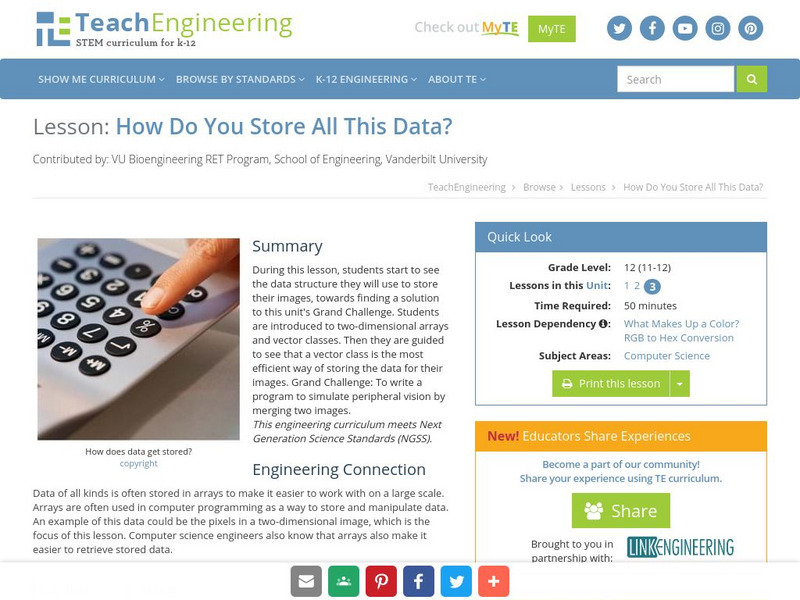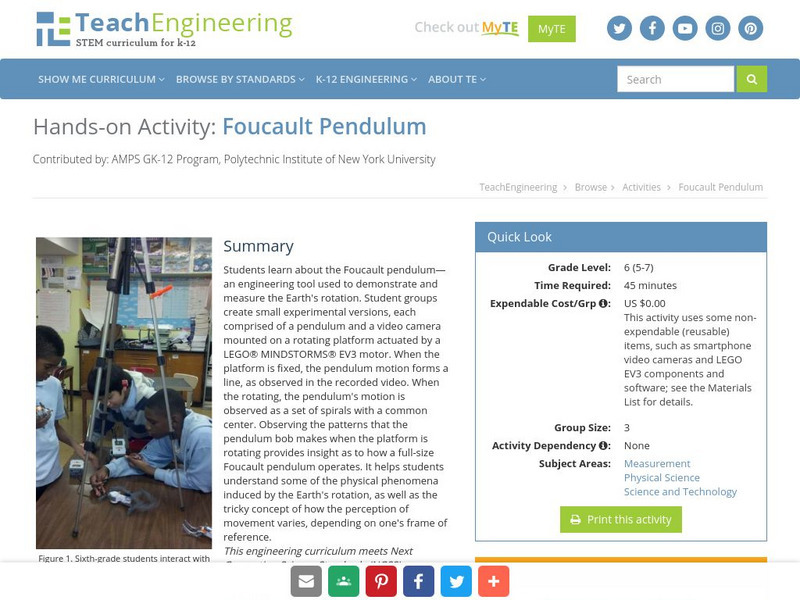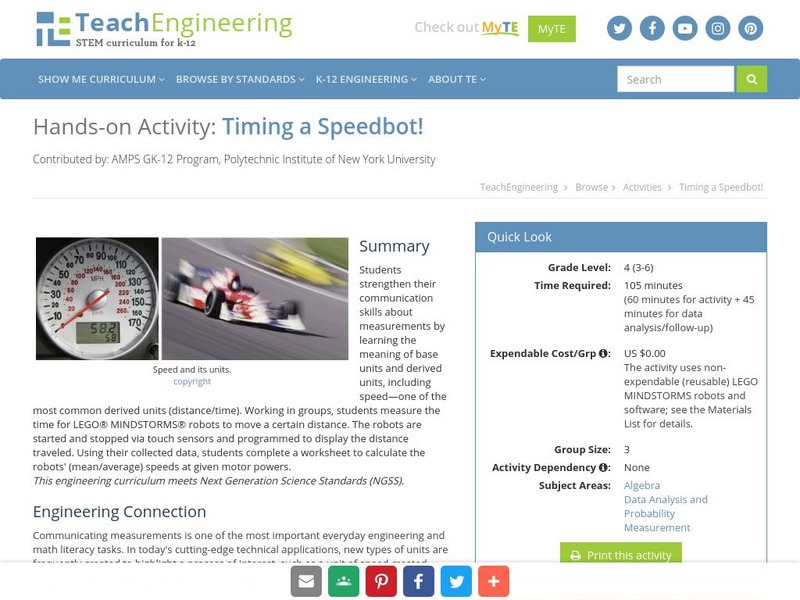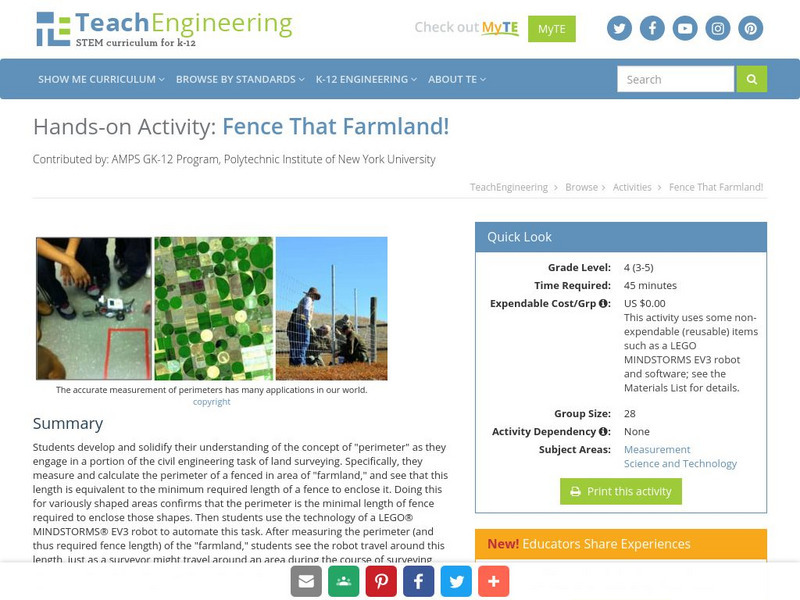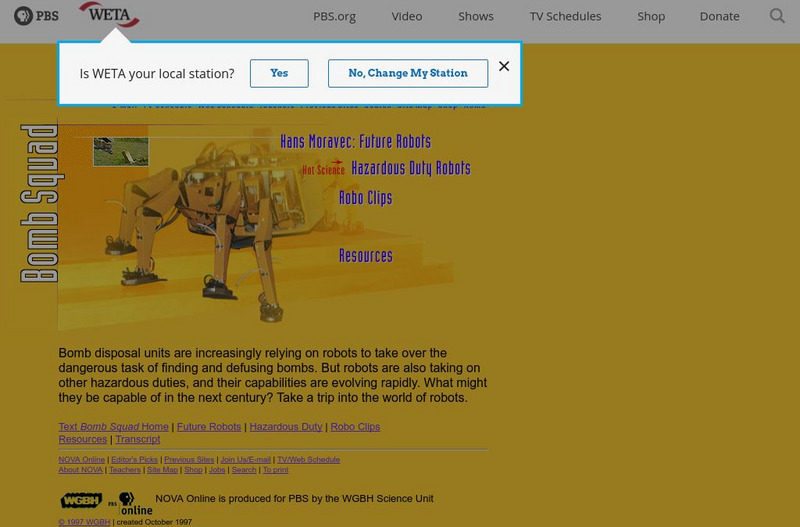TeachEngineering
Teach Engineering: Are We Like Robots?
Students explore the similarities between how humans move and walk and how robots move, so they come to see the human body as a system from an engineering point-of-view. Movement results from decision making (deciding to walk and move)...
TeachEngineering
Teach Engineering: How Does a Robot Work?
This lesson introduces electricity, batteries and motors using a LEGO MINDSTORMS NXT robot. The associated activity guides young scholars to build a simple LEGO NXT set-up and see the practical implementation of the concepts discussed....
TeachEngineering
Teach Engineering: How Do Human Sensors Work?
This instructional activity highlights the similarities between human sensors and their engineering counterparts. Taking this approach enables students to view the human body as a system, that is, from the perspective of an engineer....
TeachEngineering
Teach Engineering: What Is a Motor? How Does a Rotation Sensor Work?
Students learn about electric motors and rotational sensors. They create a basic program using the LEGO MINDSTORMS NXT interface to control a motor to move a small robot.
TeachEngineering
Teach Engineering: How Does a Touch Sensor Work?
Students look at human senses and their electronic imitators, with special focus on the skin and touch sensors. They have a chance to handle and get familiar with the LEGO touch sensor, including programming LEGO MINDSTORMS NXT robots to...
TeachEngineering
Teach Engineering: How Does a Light Sensor Work?
A mini-activity, which uses LEGO MINDSTORMS NXT intelligent bricks and light sensors gives students a chance to investigate how light sensors function in preparation for the associated activity involving the light sensors and taskbots.
TeachEngineering
Teach Engineering: The Grand Challenge: Simulating Human Vision
Students are introduced to the Robotics Peripheral Vision Grand Challenge question. They are asked to write journal responses to the question and brainstorm what information they require to answer the question. Their ideas are shared...
TeachEngineering
Teach Engineering: How Do You Store All This Data?
During this lesson plan, learners start to see the data structure they will use to store their images, towards finding a solution to this unit's Grand Challenge. Students are introduced to two-dimensional arrays and vector classes. Then...
TeachEngineering
Teach Engineering: Foucault Pendulum
Students learn about the Foucault pendulum, an engineering tool used to demonstrate and measure the Earth's rotation. Student groups then create small experimental versions, each comprised of a pendulum and a video camera mounted on a...
TeachEngineering
Teach Engineering: Timing a Speedbot!
Students strengthen their communication skills by first learning the meaning of base units and derived units. Then, working in groups, students measure the time for LEGO MINDSTORMS NXT robots and calculate the robots' average speeds at...
TeachEngineering
Teach Engineering: The Claw
Students learn about gear ratios and power by operating toy mechanical cranes of differing gear ratios. They attempt to pick up objects with various masses to witness how much power must be applied to the system to oppose the force of...
TeachEngineering
Teach Engineering: Fence That Farmland!
Students develop and solidify their understanding of the concept of perimeter as they engage in a portion of the civil engineering task of land surveying, using the technology of a LEGO MINDSTORMS NXT robot to automate this task.
Other
Intelligent Autonomous Systems
University of Amsterdam research information focused on robotics and neuroscience, including visual and sound perception.
TeachEngineering
Teach Engineering: Projectile Motion
Students are introduced to the concept of projectile motion, of which they are often familiar from life experiences,such as playing sports such as basketball or baseball, even though they may not understand the physics involved. Students...
Science Buddies
Science Buddies: Squishy Robot Simulator
Robots come in many shapes and sizes. Everything from the Mars Rover to a toy dinosaur is a well planned machine designed to suit its purpose. In this experiment you will test different robot designs with an online simulator.
Other
University of Bradford: Bradford Robotic Telescope
Allows students to submit a request for a telescope in England to view a portion of the sky. The telescope is robotically controlled via the internet.
Harvard University
Harvard Robotics Laboratory
Research projects on computational vision, neural networks, tactile sensing, motion control and VLSI systems. Plus general info, Harvard and robotics related pages.
PBS
Pbs Learning Media: Programming a Robot
In this video segment from Cyberchase, the CyberSquad breaks down an action into a series of steps in order to program a robot to do what they need it to do. [4:50]
English for Everyone
Reading Comprehension Assessent: "Robots" [Pdf]
Read Theory provides a free reading comprehension assessment that is designed for reading students in elementary grades. Six multiple choice questions and one extended response question are included on the nonfiction reading assessment.
Massachusetts Institute of Technology
Mit: Open Course Ware: Mobile Autonomous Systems Laboratory
This course guides students through the design and production of an autonomous robot that must face a series of competitive challenges.
Penguin Publishing
Penguin Random House: Doug Unplugged by Dan Yaccarino
This is an introduction to the children's novel Doug Unplugged by Dan Yaccarino, a science fiction book for young readers. It includes a brief summary, links to about the author information, book reviews, and other books by the author....
PBS
Nova Online: Bomb Squad
Information on robots that are used for hazardous duty, such as patrolling beaches to find land mines, is found here.
Other
Welcome to Genetic Programming: Homepage
A very comprehensive site from genetic-programming.org that has theses, essays, articles, and links all relating to genetic programming.
Carnegie Mellon University
Carnegie Mellon University: Robotics Institute
Robotics research at Carnegie Mellon University includes links to projects, research, and events.








